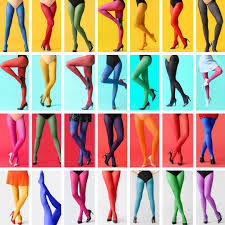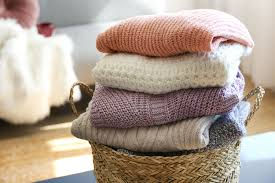Fabric Types and How to Choose!
- Nathan Thomas
- Mar 5
- 5 min read

Do you need a nice shirt but you live in a place with unpredictable weather?
Do you want to make your own custom apparel yet don’t know where to start or how to choose?
This blog is here to help you! The world of clothing and textiles is vast and can get a little tangled in the seams. More specifically, Fabric itself is one of the major things designers, from professional to novice, can mess up easily because of how cluttered and over-complicated it can seem. Not to worry, the topics mentioned further will cover:
History and Makeup of Fabrics
A category of fabrics based on strength, water affinity, static resistance, warmth, cooling factor, etc., and their specific weaknesses and strengths.
Before we move on, like other arts, the principles of design and fashion aren’t a rulebook. They are mere guidelines that tell us how to have a product that works like it should. No, if you are unable to get a specific material and luxury items, you shouldn’t give up on your design. As a learner, you must use these guidelines, your learning pace, and, most importantly, creativity to see the true magic in design. Though you should remember that these guidelines are here for a reason. The goal is to structure your piece around them and your needs. For example, a housewife in Jamaica and a graphic designer in Brampton would have two different concepts of what would fit them. As such, it is important to seek inspiration but to never copy unless you are confident.
History of Fabric

Style and clothing have existed for thousands of years, with each day seemingly creating piles upon piles of new ways to mix and match and apparel to choose from. One of the most important historical fabrics is silk.
Silk originates from China, with its invention debated to be around 2600 BC - 3650 BC. The fiber is made of protein produced by the silkworm moth larva, or simply the silkworm. The moths use it to cocoon themselves when metamorphosis occurs. When silk is farmed, these cocoons are harvested by being ripped off the perch, soaked in boiling water, and reeled into one continuous string; then they are twisted, dyed & patterned to form the luxurious fabric known today, worn by royalty and traded around the world, and at one point valued more than gold.
Another important fabric is cotton. Known for its soft, plush feel, it was invented around 5000 B.C. within the Indus River Valley (now Pakistan). It is a vegan fabric that is found on the peak of its plant’s blooms. Once harvested, the cotton is cleaned and spooled to turn it into yarn, then woven and dyed to give us the fabric used presently.
Make-up and Composition
Natural fabrics are made out of fibers, little strings of plant matter that cluster together to form the fabric used. These fibers are made from plant matter and animal skins.
Synthetic fabrics are made out of many chemical compounds such as polyurethane, polymers, etc. These compounds are made from fossil fuels, specifically from petroleum.
These factors are very important as they tie into its properties and how it is used.
Best for….
This listing shows the most popular fabric used to satisfy each person’s wants within clothing design.
Water Resistance
Polyester
Cotton (specifically ELS, which is a specific breed of cotton)
Nylon
Linen
Sweat Absorption
Cotton
Bamboo
Wool (Merino Variant)
Linen
Warmth
Wool
Fleece
Leather
Cashmere
Silk
Cooling
Cotton
Rayon
Polyester
Linen
Environmentally Friendly
Cotton
Wool
Tencel
Linen
Static resistance
All natural fibers (except wool)
Polyester
Nylon
Weaknesses and Strengths
Cotton: This fabric is extremely versatile and is natural for those that want to keep a more natural look/lifestyle.

Strengths: Naturally sustainable, comfortable, best for humid climates because it absorbs moisture and is breathable, odor-free because of its high absorption, low maintenance (best washed using warm-cold water but can withstand hot water as well).
Weaknesses: is not warm, is prone to shrinkage, is pricey, and wears down faster compared to other natural and synthetic fibers.
Polyester: Polyester is a synthetic fiber formed by polymers. It is often used as a cotton substitute because of its similarities and wider color range.

Strengths: Is breathable, wicks moisture, is easy to care for (warm water is best), and is stain resistant.
Weaknesses: Collects odor because synthetic fibers are not good at odor suppression. Is heat sensitive, harder to make, and less comfortable.
Nylon: A synthetic fiber used for making swimwear and activewear. It is very stretchy and durable.

Strengths: Durable, stretchy, lightweight, heat resistant, cheap
Weaknesses: Not fire resistant (melts), Has such a high affinity for water that it takes it from the air, which causes less odor suppression, Swells when wet.
Linen: Made from flax, linen is one of the most well-known fabrics in the world. Used for bedsheets, dining cloth, and curtains, it is a household staple.

Strengths: Comfortable, moisture-wicking, environmentally friendly, and durable.
Weaknesses: Expensive, needs a lot of specific care to increase its lifespan.
Bamboo: As the largest within the grass family (lawn grass, rice, etc.) and one of the fastest-growing plants, growing an inch per day, it's no surprise that bamboo would be harvested and used as a fabric. Its sturdy outside can be broken down and processed by soaking and spooling to create a simple yet ever-so-popular fabric known and loved.

Strengths: Easy to dye, breathable, comfortable, hypoallergenic, and easily harvested.
Weaknesses: Wrinkles quicker, expensive, prone to shrinkage, tends to make clothes look drab because of its high susceptibility to wrinkles if not taken care of.
Wool: One of the most ancient fabrics in the world, wool has stood the test of time, still used and as beloved as it was millennia ago. Harvested from sheep, it’s iconic for its fluffy looks and its subvariant textiles, such as yarn.

Strengths: The warmest fabric there is, good insulation, water-resistant (not waterproof), and easily dyeable.
Weaknesses: Tends to be pricey, is sensitive to heat, and is commonly known to be itchy or an allergen to many people.
Rayon: A strange thing she is, Rayon is a semi-synthetic fabric made from cellulose and artificial components. It goes by other names such as viscose, sabra silk, or cactus silk.

Strengths: Smooth, absorbent, inexpensive
Weaknesses: Wrinkles easily, disfigurement from stretching and shrinking, not sustainable.
Tencel: Rayon’s less environmentally destructive daughter. Tencel also known as Lycell, is an altered form of recycled rayon made with less harsh chemicals.

Strengths: Durable, soft, smooth, and breathable
Weaknesses: Is expensive and very heat sensitive.
Leather: The most popular animal-made fabric aside from silk, leather has been a staple in both low and high-class penchants in human history for thousands of years.

Strengths: Durable, extremely versatile (from clothing to furniture), flexible
Weaknesses: Requires inhumane animal handling; chemicals used to cure leather are dangerous and are carcinogenic pollutants. Leather is notorious for being expensive because of its high-class status, and as such, many low-quality replicas will be sold to unsuspecting consumers.
Cashmere: A soft fabric made from the hairs of the Kashmir goat.

Strengths: Soft, luxurious, warm, and long-lasting.
Weaknesses: Expensive, delicate, color will fade over time.
Silk: Known for its luxurious status and its smoothness and luster. Silk is a celebrity in the world of fashion.

Strengths: Soft, smooth, shiny, breathable, cool
Weaknesses: Delicate, expensive
How to choose?

When figuring out how to select your pick of fabric, you must figure out what it is you desire to make or style. Here are some guidelines for choosing materials based on your needs below.
Swimwear: Nylon (stretchy and durable)
Activewear: Cotton for warm weather and odor reduction or nylon
Casualwear: Cotton, Polyester, Bamboo
Formalwear: Silk, Cashmere, Tencel



Comments